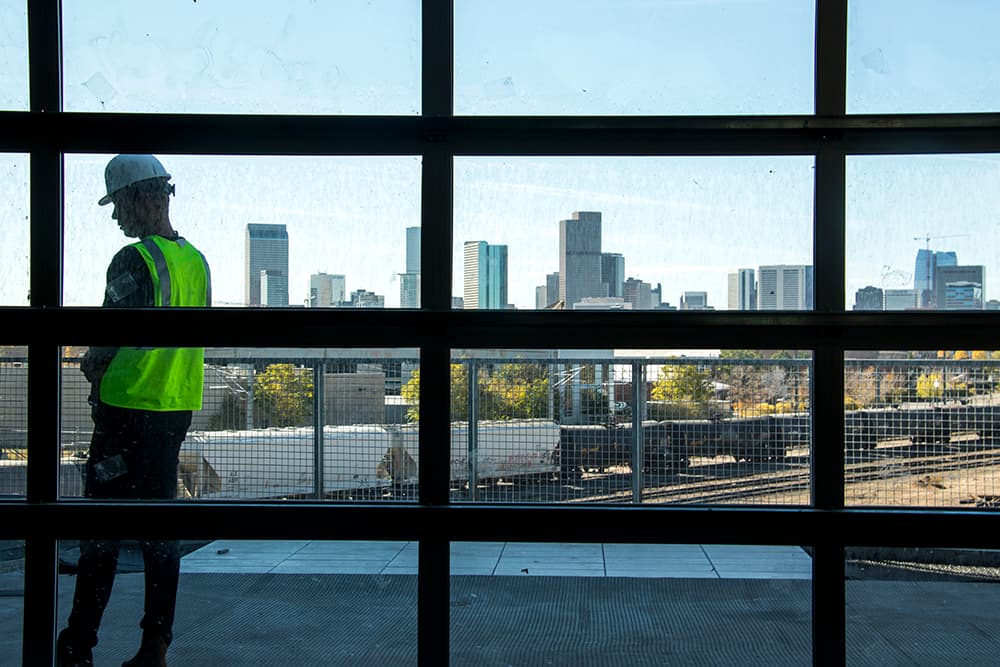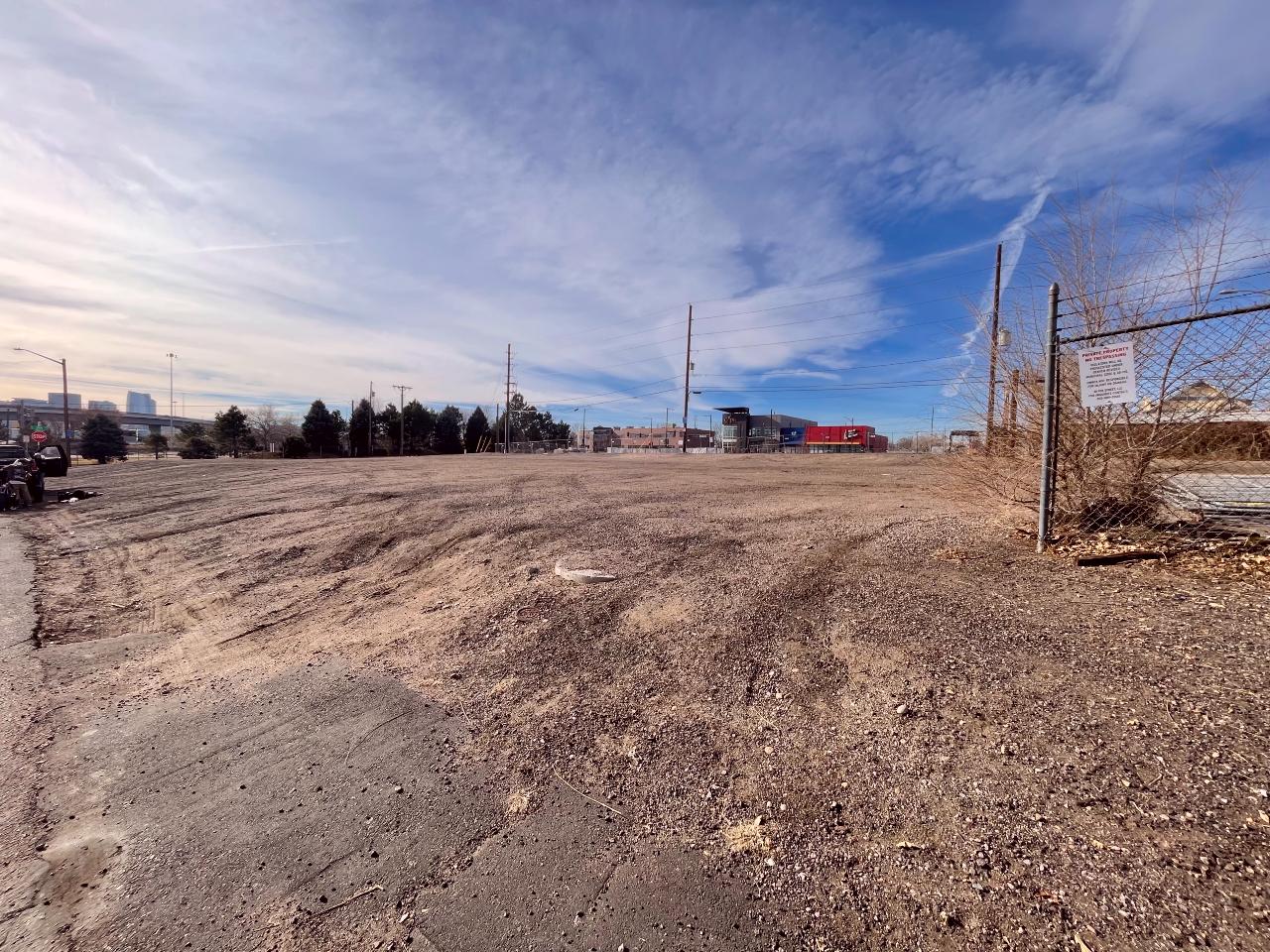
When Zeppelin Station is complete and ready to open at the end of the year, RiNo will change in a big way.
The area is increasingly unrecognizable as the swath of warehouses it was just a few years ago. It's now home to big apartment buildings, breweries, a winery and trendy restaurants — but perhaps the most notable additions are enormous, multi-purpose developments like Zeppelin Station.
The 100,000-square-foot building will house office and retail space as well as a 20,000-square-foot food market just across the pedestrian bridge from the 38th & Blake rail station, bringing droves of people with it.
"That’s kind of he theory behind what we’ve been doing — new economy work space," Kyle Zeppelin said. "People want the same space when they go to work that they want though the rest of their life. "
For people moving to cities like Denver, that means access to public transportation (check), a variety of good food options (check), an urban environment (check) and some green space (check).
"It’s really about attracting and retaining the best quality of young people," he said.


As it stands right now, new dining and nightlife options like Rebel Kitchen, Black Shirt Brewing Co. and Bigsby's Folly, which is directly next door to Zeppelin Station, seem out of the way for the average Denverite. Tucked into what is still largely a warehouse district, they're not located where most people live and work.
But that's changing, and Zeppelin Development plays an enormous role in that. The company is behind three of the four major developments in RiNo right now — Zeppelin Station, the 140,000-square-foot office building Flight at Taxi and the 25,000-square-foot market The Source, which is now getting a hotel with three restaurants and a brewery. (The fourth is Catalyst HTI, going up just north of Zeppelin.)
Here's some of what will be inside Zeppelin Station:
- A food market including Aloha Poke Co., Mister Oso, Dandy Lion Coffee, Vinh Xuong Bakery, Au Feu, Fior Gelato and a common-area bar and outdoor seating;
- RiNo Art District headquarters, including a retail space connected to the food market that will sell locally made things;
- A yet-to-be-signed anchor restaurant, also adjacent to the food market;
- About 75,000 square feet of office space, filled by Zeppelin Development, Brandfolder, DFine Branding and other yet-to-be-signed companies.
The market is the most publicly accessible space, and as such, Zeppelin and Director of Hospitality Development Justin Anderson put a lot of thought into how it works and what it offers.
"You have this new economy, demographic in the neighborhood that doesn’t have 30 bucks to spend or an hour on lunch," Zeppelin said.
When you walk in the front door at Zeppelin Station, you'll be faced with a centralized kitchen and communal seating. A large staircase to the second level will also offer bleacher-style seating that faces a bank of TVs.


In addition to the ground-floor green space outside the food hall, the offices will have access to cascading, green patios and additional green space on the roof. And to really lean into Denver's friendly climate, there are garage doors along the walls to really air the place out.
And that green space has been well thought out. Grated fences along the patios will allow vines to grow up over them and the gardens will be planted with vegetation native to Denver, which Zeppelin points out is unlike the average corporate office building. The building is also designed in such a way that water draining off the roof will provide natural irrigation.

In recognition of its location next to the rail station — one stop from Union Station along the line bringing people to and from the airport — the food market will have screens updating diners on travel times to Denver International Airport, train departures and arrivals and updates on how many bikes are available.
"There’s nothing conventional about the building or the design,
including some features — views, natural light, fresh air and the design features — it’s just not a typical corporate office building," Zeppelin said.
It's all designed with a modern lifestyle in mind, and that's not just for one demographic, Zeppelin says. "What we found down at The Source is that you do have some pretty varied demographics, it’s not all millennial kids.
"Part of the role for our projects is to get people outside of their normal comfort zone. There’s some common values that people can interact with and that function in a way that’s pretty compatible."

Zeppelin Station sits on the former site of Wazee Union, home to 45 artist studios. Zeppelin helped relocate them to the Globeville Riverfront Art Center (GRACe), where there are 200 studios. It's a friendlier move than what's happening just a couple blocks away, where the Catalyst HTI development threatens Rhinoceropolis and Glob, the decade-old DIY spaces still working to reopen after the city shut them down post-Ghost Ship fire.
But in this area of RiNo — sandwiched uncomfortably between the train tracks and the South Platte River, bisected by the generally un-walkable Brighton Boulevard — Zeppelin Development saw the place they wanted to build their vision for Denver.
There was not much neighborhood presence in the sense that there was hardly any residential space (though it happens to be where his father, Mickey Zeppelin, lives) and even some of the industrial space was abandoned. So the Zeppelins have been busy trying to build a neighborhood. Zeppelin Station is their next big move.











